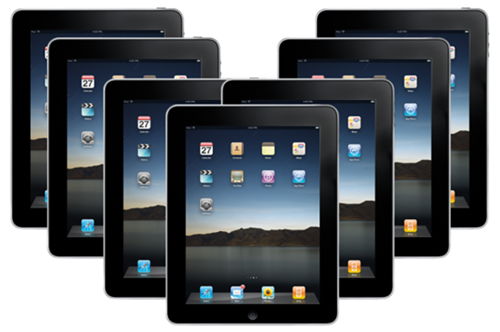In the first part of this series, two distinct physical methods of connecting your iPad to the interactive whiteboard (IWB) in your classroom were discussed. In this article, we look at three more ways that you could connect these two devices via apps for an improved interactive environment in the classroom.
1. AirServer
AirServer is an application that is developed for the Mac and PC that enables mirroring between your iPad and PC/Mac. By connecting the computer to the interactive whiteboard and activating the mirroring function through the app, you can have the content on the iPad displayed on the IWB’s screen. For this connection to work, both computer and iPad must be included in the local network.
AirServer also enables collaboration by allowing multiple devices to share their displays on the interactive whiteboard, irrespective of platform and device type.
The publishers of AirServer let you try its features for free for several days, after which you can buy a license .
2. Reflector
Reflector is a useful app that lets you connect to your PC or Mac by using the mirroring function, almost in the same fashion as AirServer. Once you install the app on the PC, your iPad can easily connect to it and allow the content on the iPad to be mirrored on other secondary display devices connected to the PC, such as the interactive whiteboard.
To connect, head over to the icon on your iPad’s home screen labeled AirPlay. Click the icon to launch the application and choose the computer name from the list that comes on. Once you select your computer, activate the mirroring function to have your iPad display duplicated on the computer and on the interactive whiteboard if one is connected.
Like AirServer, Reflector only works if the computer and iPad are connected to the same wireless network. Reflector is offered with a trial version for free, with the paid complete single user license.
3. Splashtop Remote Desktop
Splashtop is an innovative software suite that allows you to connect to the interactive whiteboard through your Mac/PC from your iPad. The Splashtop Remote Desktop app lets you connect to and control PCs or MACs that are connected to your IWB. However, the control function does not extend to the IWB.
When you connect to a PC or MAC that is available on your wireless network, the app allows you to manipulate the computer’s screen from your iPad. You can click on icons on the computer, open applications, and do virtually anything that you would do on your regular computer.
While you need to have your computer on the same network as the iPad, Splashtop Remote Desktop allows you to set up password control so that you can secure your PC from unauthorized connections. The icons displayed on the iPad from the computer are normally small and would require certain software to help you navigate the computer’s screen from your iPad. Splashtop is functionally similar to TeamViewer and LogMeIn, which have been in the PC interconnectivity niche for years.
The app is available from the app store at a pretty cheap price while the PC client bundle is freely downloadable from the Splashtop website and third party vendors.
Conclusion
Apps that allow you to connect directly to your interactive whiteboard from your iPad are mostly ineffective and hard to come by. The apps and connectivity methods described here allow you to duplicate content from your iPad to your students with relative ease, thus giving you different levels of freedom and interactivity in the classroom. Connecting using your VGA cable is probably the easiest method but takes away the aspect of freedom since you are tethered to the front of your class. AirServer and Reflector are affordable options when your wireless setup allows it but Apple TV takes the crown under these circumstances. As long as your wireless infrastructure at school supports it, Apple TV offers the most benefits when connecting your iPad to your interactive whiteboard.
Previous:Resistive Vs Capacitive Interactive Whiteboards
Next:5 Top Ways to Connect Your iPad to the Interactive Whiteboard –Part 1
